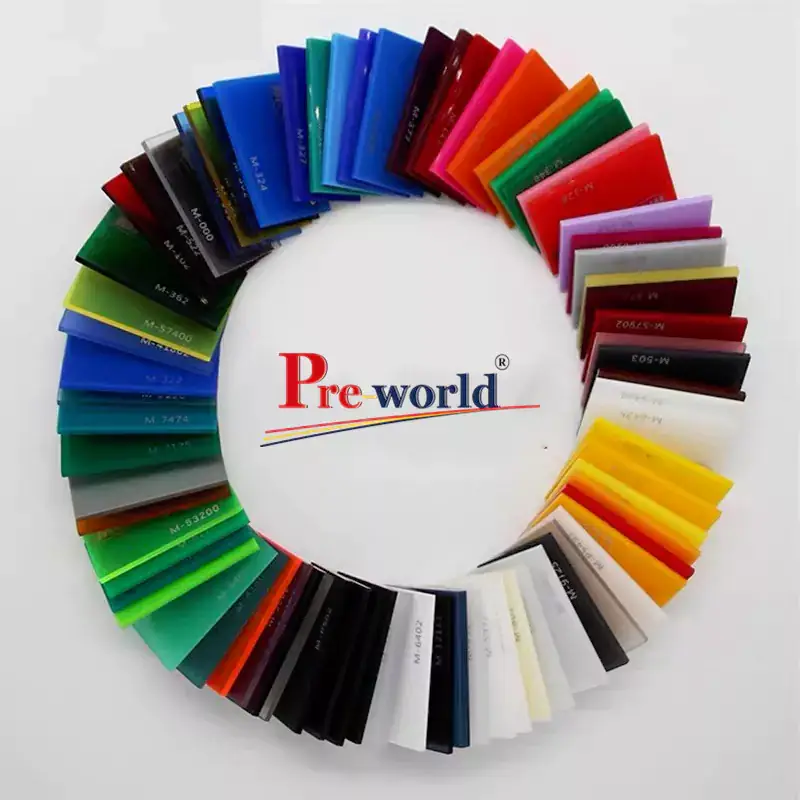How To Prevent Acrylic From Cracking When Drilling
2025-10-11
That moment of dread when a hairline crack spiderwebs out from your freshly drilled hole—it’s a frustrating experience many DIYers and professionals face. The good news is that it’s entirely preventable. With the right technique and an understanding of the material, you can achieve clean, professional results every time. The key lies in managing heat and stress, which is where the quality of your Acrylic Sheet truly matters. A superior product, like those from Pre-world, is formulated for better stress distribution and machinability, giving you a crucial advantage from the start.
Why Does Acrylic Crack During Drilling
Acrylic is a thermoplastic, and it’s sensitive to stress concentrators. Cracking occurs for two primary reasons:
-
Excessive Heat: Friction from high-speed drilling generates heat. If the heat isn't managed, the acrylic expands locally and can fracture.
-
Tool Force and Design: Using the wrong drill bit, like a standard wood twist bit, aggressively grabs and pulls the material, creating internal stresses that lead to cracking.
A Professional Step-by-Step Guide to Safe Drilling
Follow this proven method to protect your project.
-
Secure the Material: Clamp your Pre-world Acrylic Sheet firmly to a solid backing board. This prevents vibration, which is a major cause of chipping.
-
Select the Perfect Drill Bit: This is the most critical step. Avoid standard bits. Opt for:
-
Carbide-tipped bits: Excellent for durability.
-
Brad-point or spur-point bits: These score the circumference before drilling, ensuring a clean entry.
-
Countersink bits: For creating a chamfer after drilling.
-
-
Master Speed and Feed: Use a variable speed drill. Set it to a low RPM (150-500). Apply steady, gentle pressure—let the bit cut without forcing it.
-
Use a Lubricant/ Coolant: For extended drilling, a continuous stream of water or using isopropyl alcohol as a lubricant can keep temperatures down.
-
Clear Chips Frequently: Periodically pull the bit out to clear acrylic shavings from the hole, preventing binding and heat buildup.
-
Support the Exit Point: Place a scrap piece of wood underneath your acrylic sheet. This provides support as the drill bit exits, preventing blow-out and cracking on the back side.
Drill Bit Comparison Table
| Bit Type | Best For | Why It Works |
|---|---|---|
| Standard Twist Bit | Wood, Metal | Not Recommended. Prone to grabbing and cracking acrylic. |
| Brad-Point Bit | Acrylic, Wood | Sharp point prevents walking; sharp spurs score a clean hole. |
| Carbide Tipped Bit | Acrylic, Tile | Stays sharper longer, reducing heat from a dull edge. |
Frequently Asked Questions
What is the best drill speed for acrylic
A slow to medium speed is crucial. Keep your drill under 500 RPM to minimize heat buildup from friction.
Can I use a drill press for acrylic sheets
Absolutely. A drill press is ideal as it provides consistent speed and perpendicular pressure, offering the highest level of control and clean results.
How does the quality of the acrylic sheet affect drilling
A premium Acrylic Sheet from Pre-world is manufactured with superior internal stress management. This inherent stability makes it far more resistant to cracking during machining processes like drilling compared to lower-grade alternatives.
Achieve Flawless Results with the Right Foundation
Preventing cracks isn't just about technique; it starts with using a material designed for success. A high-quality Pre-world Acrylic Sheet provides the consistent density and stability that makes precise drilling achievable. Don't let a simple drilling task compromise your vision.
Contact us today to learn more about our machinable Acrylic Sheet options and get expert advice from the Pre-world team. Let us help you build with confidence.
